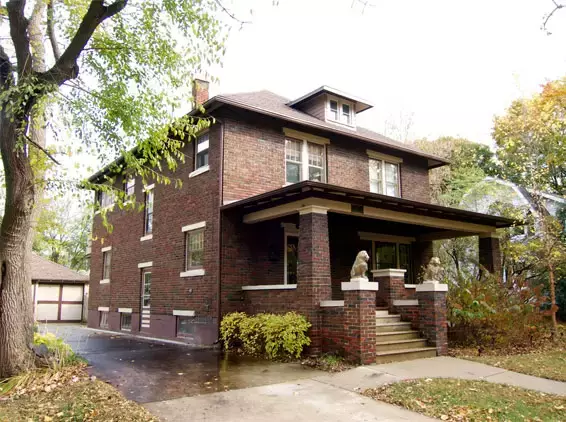In Ten Years, Emmer & Rye Grew From 20 Covers a Night to a Pillar of Texas Dining

It’s a long-held belief that if a restaurant makes it past its first year, it’s already beaten the odds. The exact numbers are murky, but in an industry defined by thin margins and high turnover, every year of survival feels like a milestone. Ten years in business, then, is a small miracle. Especially when that decade is defined by not just surviving, but thriving.
Nobody understands this more than Kevin Fink, chef and partner of Austin’s Emmer & Rye Hospitality Group. “Growing up, we fought against ‘What are you going to do for a real job? Oh, you’re a server, you’re a cook, that’s great. When you grow up, what are you going to do?’” he says. “And now today the question is like, ‘Oh wow, you run a restaurant, congratulations. Good luck — I hope it stays open.’”


Fink and Tavel Bristol-Joseph, also a chef and partner at Emmer & Rye, opened the eponymous restaurant — which is celebrating a decade of cooking with parties November 8 and 9 — on Rainey Street in 2015. The idea was simple but relatively new to Austin, a city then in the midst of its shift from a beer-and-a-shot college town into a growing metropolitan hub with a food scene to match. The restaurant leaned on Texas farmers, in-house grain milling, and constant experimentation earning Fink and company national attention, including Food & Wine’s Best New Chef honors in 2016. Fink says the national attention didn’t signify an immediate pop in business; it was gradual. “We grew about 10 percent a week, but over the first year we were like 340 percent busier than when we started,” he says.
Bristol-Joseph says that the central question they wanted to answer with Emmer & Rye was what exactly Texas food is — beyond the simplicity of Tex-Mex and barbecue — and how to showcase that breadth in the best possible way. “From our experiences working with local farmers and vendors, we knew that the food coming from a place and what we eat in season is a representation of that place,” he says. Emmer & Rye’s philosophy is more informed by terroir than genre. “The first year we did 400 unique dishes. Year two, we did 250. The consistent thing was the farmers and the ranchers,” Fink says. “The inconsistent thing was the dishes.”

The early days were marked by 14- to 16-hour shifts and 20 to 30 covers a night. “We were proud of the food and still hemorrhaging cash. You keep going,” Fink tells Eater. The chefs themselves (along with Fink’s wife and hospitality group partner, Alicynn Fink, and former chef de cuisine Page Pressley) were answering phones to book reservations those days because they were so thin on staff. “When you are faced with challenge and struggle and that push, the belief in what you’re doing is so strong that every single day you wake up so excited to prove why you exist,” Bristol-Joseph says.
Now, Emmer & Rye has expanded into a powerhouse hospitality group, with spots in Austin, San Antonio, and soon, Houston. Three of its restaurants, Hestia in Austin and San Antonio’s Isidore and Nicosi, hold a Michelin star — Emmer & Rye has a Green Star and is a Bib Gourmand. Each restaurant has its own identity, too. “We start every concept by asking what is missing. If it aligns with our why, we build it,” Bristol-Joseph says.
Canje, is a personal project for Bristol-Joseph, as it draws from his Guyanese roots, celebrating the wider Caribbean; Hestia comes from the chef’s aching desire to cook with live-fire; Ladino and Ezov lean into the Mediterranean; Kalimotxo channels Spainish tapas and its convivial ethos; and the ambitious Pullman Market complex in San Antonio is a playground for food lovers with specialty grocer, a whole animal butcher, bakery, a chef supply shop, and nine restaurants spanning fast casual to full service. If a certain flavor of adult longs for trips to Disneyland, the type who has Saveur, Eater, and Bon Appétit tote bags might call the 40,000-square-foot market paradise.

A 20-seat eight-course dessert-only tasting menu that bans cell phone photography, Nicosi doesn’t scream something that’s missing on surface-level, but Bristol-Joseph, Emmer & Rye’s opening pastry chef back in 2015, would emphatically disagree. “There wasn’t a space that celebrates a pastry chef that has worked their whole life to be the best version of them, and knowing that they will always stand behind the executive chef,” he says of the restaurant, where longtime pastry chef Karla Espinosa was once chef de cuisine. “So there was something that was missing, not necessarily in the community, but in your career. And we got to fulfill that.” So Nicosi, now under Jorge Hernandez, Emmer & Rye Hospitality’s corporate chef of recipe development and innovation’s tutelage, is a bit personal too.
That instinct to build what’s missing or tap into lived experience is what’s sustained Emmer & Rye for 10 years, even after the pandemic threatened to level the hospitality industry. “Running restaurants is really vulnerable,” Fink says. “You have to have a long view in something that demands immediacy every day.”
A decade in, after playing a crucial part in defining what dining can look like in Central Texas, the team is setting its sights on Houston, an inarguably iconic global food city, to open a new restaurant in 2026. The plans aren’t yet solidified. At one point, the goal was to open another Canje or something like Ladino, but they never took. “We’ll never arrive in a city to fix it,” Fink says. “We go to listen first — to the growers, to the community — and build from there.”
Categories
Recent Posts











